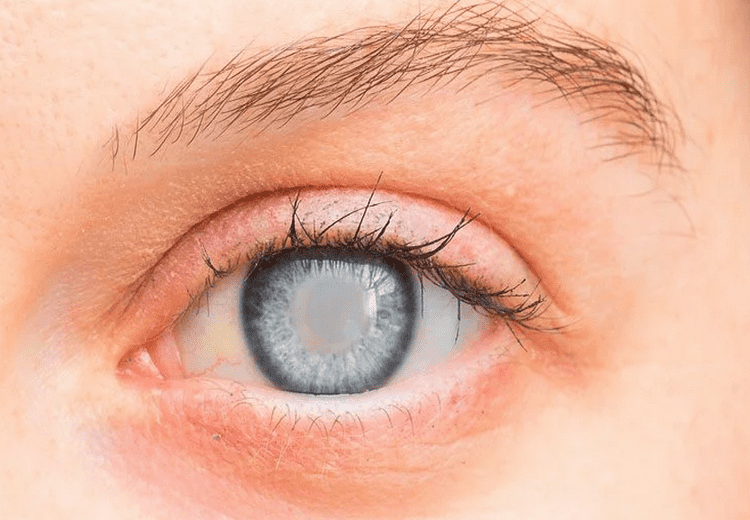
Currently, over eighty million people have been diagnosed with Glaucoma globally. It is the most common eye disease worldwide. It has also become the leading cause of blindness in African Americans. While it cannot be cured, cellular therapy for glaucoma targets intraocular pressure and peripheral vision loss with increasing success.
Anatomy of Glaucoma
Table of Contents
Your retina lies in the back of your eye. This part of your eye senses light and sends this information to your brain via the optic nerve. Once the information reaches your brain, the image appears.
Call now to speak to a Stem Cell Specialist
Retinal ganglion cells (RGCs), behind the retina at the rear of the eye, further process the information so the brain can easily turn it into an image. When glaucoma progresses and kills the retinal ganglion cells, vision is lost and can no longer be restored. Thus, the earlier the glaucoma is treated, the more vision you can retain.
Your eye makes aqueous fluid to maintain eye pressure, but as the retinal ganglion cells die, the aqueous fluid no longer drains, and pressure builds in the back of the eye.
Diagnosing and Treating Glaucoma
The most common symptom of glaucoma is increased eye pressure (known to most as Open Angle Glaucoma). Unfortunately, damage to the retinal ganglion cells will be done by the time this is discovered. Many people complain of peripheral vision loss. This loss of side vision causes tunnel vision, as if you are wearing blinders on the sides of your eyes. Many people lose vision on the nose side of the eye first. The vision loss happens over time and often goes unnoticed. Untreated glaucoma results in blindness!
Glaucoma can occur at any age. People over the age of sixty are at a higher risk for glaucoma. The risk is even higher in Hispanics over sixty and African Americans over age forty. A family history of glaucoma places you at high risk as well.
Dilating the eyes at a routine eye exam allows the ophthalmologist to measure eye pressure to diagnose glaucoma. Once diagnosed, treatments are based on the severity of the condition.
You may be treated with prescription eye drops that decrease intraocular pressure and halt further eye damage. Unfortunately, these eye drops do not work unless they are used consistently. If they are not used regularly, they can damage your eyes. Inconsistent use also makes measuring how the drops are working more difficult.
Laser treatments are also used to reduce intraocular pressure. The lasers assist in draining fluid from the eye, and this is usually done in the doctor’s office. While this sounds difficult, the procedure is quick and simple.
If the eye drops and laser therapy don’t work, surgery is needed. Several different surgical procedures can be performed, each specific to the patient’s needs and eye damage.
While current therapies can slow glaucoma’s progression, eventually, the patient will lose their vision. No matter what treatment you need, time is of the essence to maintain the vision you still have.
Stem cell therapy for glaucoma is less invasive than laser therapy and surgery. Recovery time is much quicker, and the chances of infection and rejection are eliminated when autologous (cells from your bone marrow) are used.
How Stem Cells are Used in Glaucoma
The latest news on glaucoma cure and stem cells lies in early diagnosis. Current treatments slow glaucoma’s progression, but stem cell therapy complements this regimen by regenerating and rejuvenating the optic nerve, which cannot do this on its own.
Cellular therapy for glaucoma works in two different ways. It helps to rejuvenate and safeguard the retinal ganglion cells from degeneration in the early stages of glaucoma. Major vision loss occurs when glaucoma is found later in the disease process. The stem cells can replace the ganglion cells that need to be restored to regenerate the connection between the eye and the brain.
Stem cells can develop into trabecular meshwork cells located in the front of the eye. These cells maintain healthy eye pressure by ensuring the eye fluid drains properly so the optic nerve is not damaged.
Can stem therapy cure glaucoma? No. Stem cell therapy is used as a complementary therapy with the current glaucoma treatment you are using. When used with your current treatment plan, stem cells help slow the disease’s progression, prevent damage to the eye, and protect your remaining vision.
If you or someone you know has an ophthalmic disease that can be improved with stem cell therapy, contact our stem cell therapy specialist. Here at ProgenCell, we offer autologous stem cells harvested from bone marrow. We believe that stem cell therapy should be affordable for everyone. We offer the same high-quality stem cells used in the US at more affordable prices. Begin your journey to better vision by filling out an Ophthalmic eval form. Our Bilingual staff will then contact you with an appointment for an evaluation with a stem cell expert. Ask about our best services such as stem cells for knees, stem cell therapy for alzheimer’s, stem cell treatment for multiple sclerosis.










